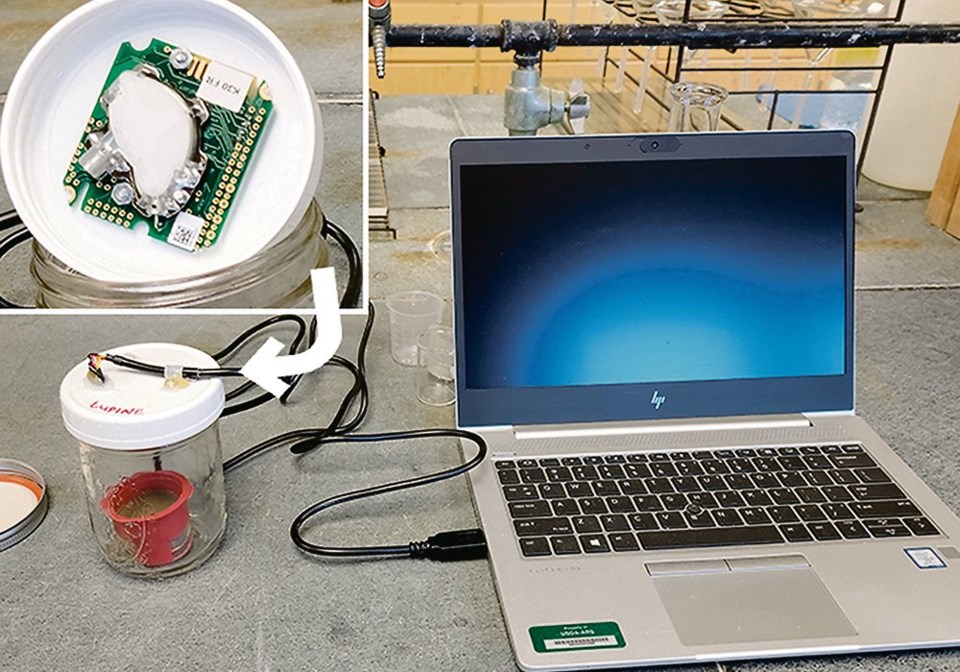WESTERN PRODUCER — As the farming community discusses crop performance, microbes, water quality, climate change, sustainability and other soil health issues, the question arises, “which soil test is most useful to the grower?”
Numerous indicators have been employed in ranking soil health by measuring carbon dioxide flush. CO2 flush is a key indicator of how well balanced a sample of soil “might be.” And “might be” are the operative words because most of these tests are inconsistent.
In a new study, United States Department of Agriculture researchers in eastern Montana evaluated a CO2 flush test that provides quicker results with better accuracy than conventional tests, and at a lower cost. The test is especially relevant in dryland farming.
The research team determined that the system was easier to conduct and resulted in a more reliable indicator of soil health.
The researchers started with the premise that carbon dioxide flushes are an indicator of soil microbial activity. They measured bursts of CO2 gas emitted when dried soil samples are rewetted, according to Upendra Sainju, lead author of the study. Soil samples were taken near the Sidney, Mont., USDA research station, about 320 kilometres south of Regina.
“Measuring carbon dioxide flush is simple and inexpensive. We also found that carbon dioxide flush is related to several soil properties and long-term crop yields,” said Sainju.
Sainju believes carbon dioxide flush can be used to measure soil health and relate crop yields more reliably. The team is using this method to evaluate and estimate dryland crop yields in arid and semiarid regions.
There are several advantages to using CO2 flush as an indicator. One key benefit is the fact that no chemicals are needed. Researchers measure CO2 flush from soil samples using devices called infrared analyzers.
“No chemicals means carbon dioxide flush can easily be used to measure soil health directly from the field. No chemicals also make the process quick and economical.
“That’s important because several existing methods to measure soil health are expensive and take a long time to analyze. Also, they provide mixed results when measuring soil health. A single reliable measure of soil health will help farmers, ecologists, policy makers and other stakeholders to evaluate the sustainability of agroecosystems for crop production.”
Measuring CO2 flush requires only a one-day incubation following rewetting of dry soil in a glass jar. The CO2 flush is absorbed by an infrared analyzer attached inside the cover of the jar and read on a laptop computer with the appropriate software.
“In addition to measuring soil health, measuring carbon dioxide flush can help farmers reduce nitrogen fertilizer use. We can use carbon dioxide flush to estimate how much nitrogen will be available from the soil to crops during a growing season. That means farmers can be strategic with fertilizer use. That can lead to lower costs of farming while enhancing environmental benefits.”
To test carbon dioxide flush as a soil health indicator, the researchers collected soil samples from two dryland study sites, both in northeastern Montana. For each soil sample, Sainju and colleagues measured carbon dioxide flush in two different ways. The two methods yielded slightly different results for C
- The traditional process entailed adding water to air-dried soil samples and letting them sit for four days. The researchers then used chemicals to measure carbon dioxide flush.
- Researchers also tested a new, faster method. The wetted soil sample sat for just one day. The researchers then used an infrared gas analyzer to detect the carbon dioxide flush.
- No chemicals were used. The inside of the Mason jar cover held an infrared analyzer, which fed data to the computer.
Sainju and his colleagues tested a number of soil properties, including physical, chemical and biological. They compared this data to the two sets of CO2 flush results for the traditional four-day method and new one-day method.
“Our results showed that the one-day process related better to soil properties and crop yields than the four-day incubations. That means an easier and faster method of measuring carbon dioxide flush. That gives us a more reliable, in-expensive and useful indicator of soil health.”
The next step is to test this method under dryland and irrigated cropping systems. They will also expand testing in various soil and climatic conditions in different regions of the country.




